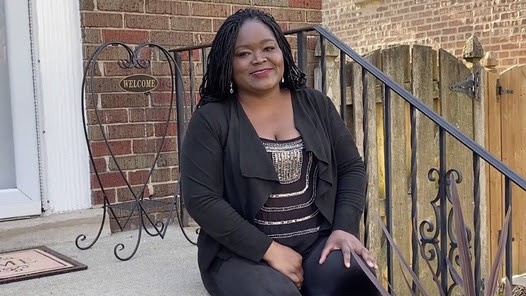 Myriam Santos
Myriam Santos
Mavis Staples
Time seemed to stand still as the 2020 Blues Music Awards unfolded on our screens yesterday: Nominees’ home-recorded performances captured on cell phones, and comments from prominent members of the music world, mixed with unique flashbacks from prior years’ awards shows, featuring luminaries such as Dr. John, Clarence “Gatemouth” Brown, Koko Taylor, Honeyboy Edwards, Luther Allison, Rufus Thomas, Ruth Brown, and B. B. King.
It was an all-online gala, with Shemekia Copeland hosting from her home. The live-streamed event was archived and can still be seen on Facebook and YouTube.
Yet the connection with history went beyond archival footage. Some of this year’s winners were seasoned veterans, embodying the living tradition of the blues more surely than any film footage. None other than Mavis Staples, so associated with the gospel and soul she cut at Stax Records and elsewhere, cemented her place in the blues with a win for Best Vocalist. And Bobby Rush took home the award for Best Soul Blues Album, a useful bookend to his 2017 Grammy for Porcupine Meat.

Christone ‘Kingfish’ Ingram
But, as if to prove that the blues are constantly being reborn, the biggest wins were scored by relative newcomer Christone “Kingfish” Ingram, of Clarksdale, Mississippi, who won five statues, three for his debut album, Kingfish, as Best Emerging Artist Album, Best Contemporary Blues Album, and Album of the Year, along with two performer awards as Best Contemporary Blues Male Artist and for Instrumentalist-Guitar. Nick Moss and his band featuring Dennis Gruenling were also big winners with three awards: Band of the Year; Traditional Blues Album, for Lucky Guy!; and Moss personally in the Song of the Year category for his composition “Lucky Guy.” Last year’s Soul Blues Male Artist award winner, Sugaray Rayford, claimed that prize again this year along with the B.B. King Entertainer of the Year award.

Shemekia Copeland hosted, and won for Best Contemporary Female Vocalist
Below is a more complete list of the winners, who continue to prove the resilience and necessity of the blues in these trying times. Bravo to one and all for adapting to the demands of physical distancing to make this a unique online event.
B.B. King Entertainer of the Year
Sugaray Rayford
Album of the Year
Kingfish, Christone “Kingfish” Ingram
Band of the Year
The Nick Moss Band feat. Dennis Gruenling
Song of the Year
“Lucky Guy,” written by Nick Moss
Best Emerging Artist Album
Kingfish, Christone “Kingfish” Ingram
Acoustic Blues Album
This Guitar and Tonight, Bob Margolin
Acoustic Blues Artist
Doug MacLeod
Blues Rock Album
Masterpiece, Albert Castiglia
Blues Rock Artist
Eric Gales
Contemporary Blues Album
Kingfish, Christone “Kingfish” Ingram
Contemporary Blues Female Artist
Shemekia Copeland
Contemporary Blues Male Artist
Christone “Kingfish” Ingram
Historical Blues Album
Cadillac Baby’s Bea & Baby Records – Definitive Collection, Earwig Music
Soul Blues Album
Sitting on Top of the Blues, Bobby Rush
Soul Blues Female Artist
Bettye LaVette
Soul Blues Male Artist
Sugaray Rayford
Traditional Blues Album
Lucky Guy!, The Nick Moss Band Featuring Dennis Gruenling
Traditional Blues Female Artist
Sue Foley
Traditional Blues Male Artist
Jimmie Vaughan
Instrumentalist Bass
Michael “Mudcat” Ward
Instrumentalist Drums
Cedric Burnside
Instrumentalist Guitar
Christone “Kingfish” Ingram
Instrumentalist Harmonica
Rick Estrin
Instrumentalist Horn
Vanessa Collier
Instrumentalist Piano
Victor Wainwright
Instrumentalist Vocals
Mavis Staples